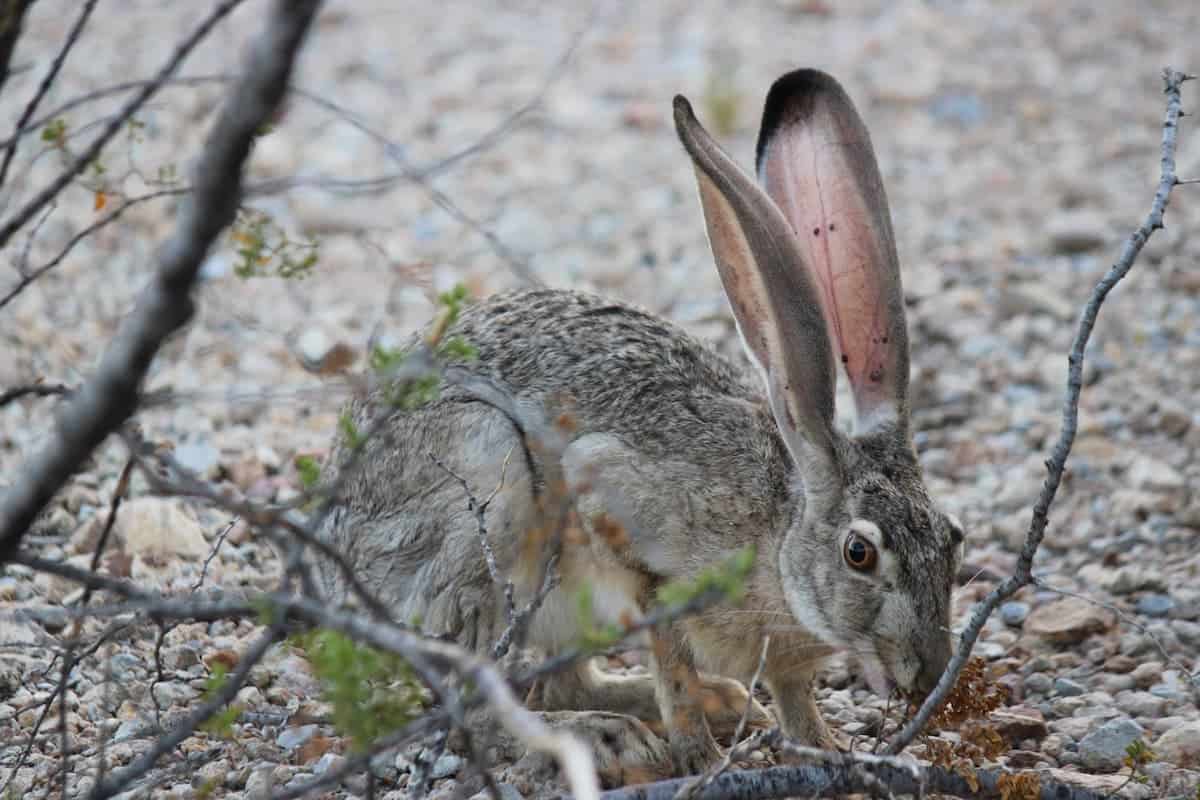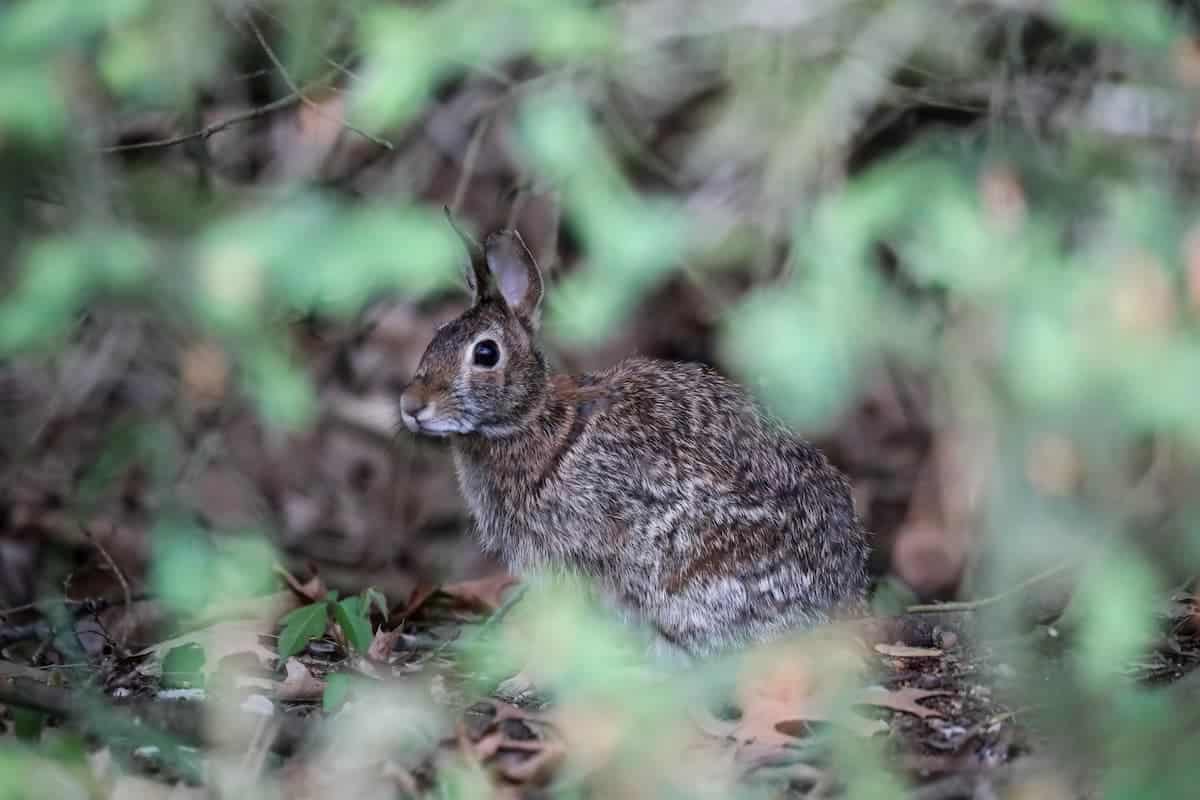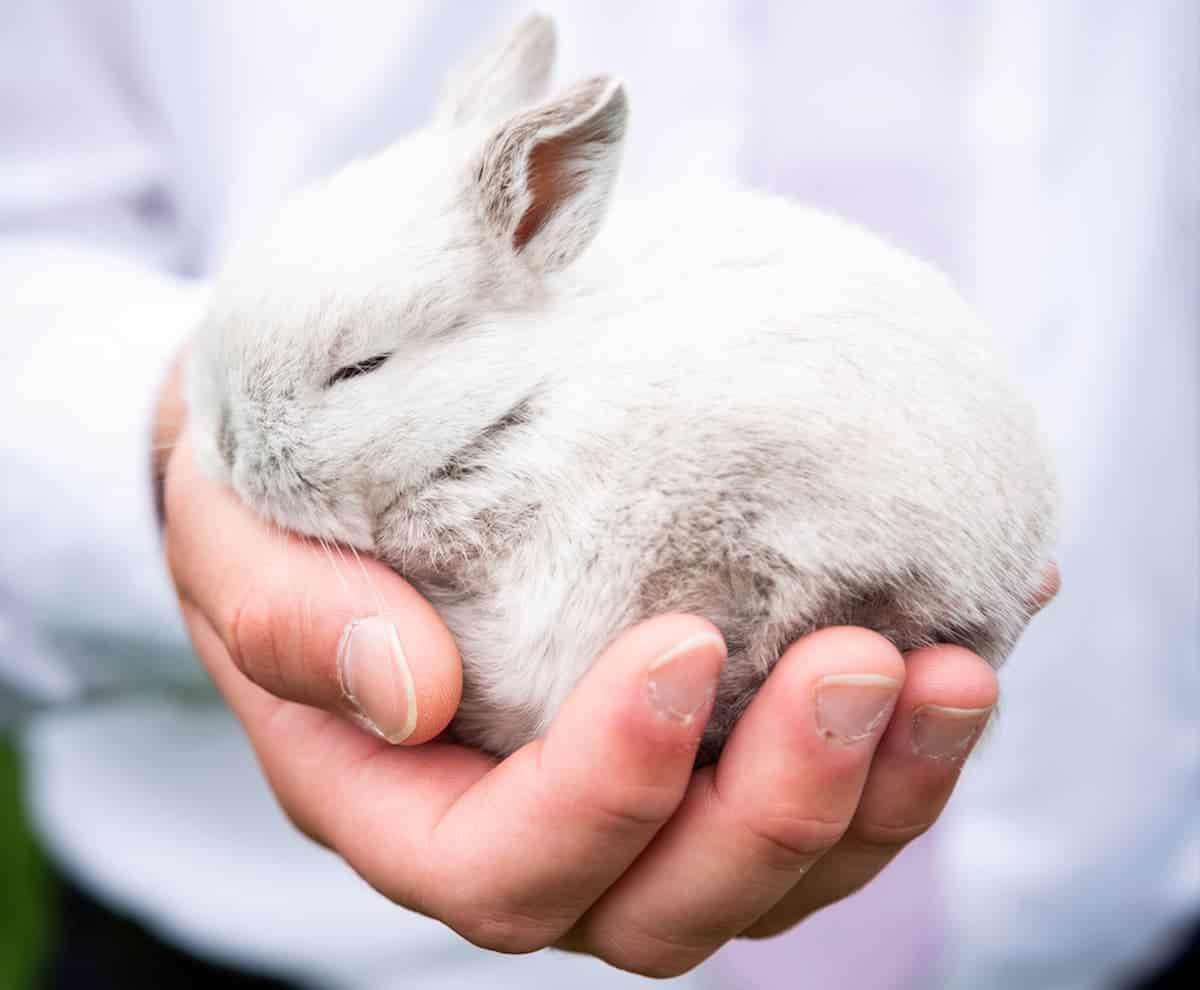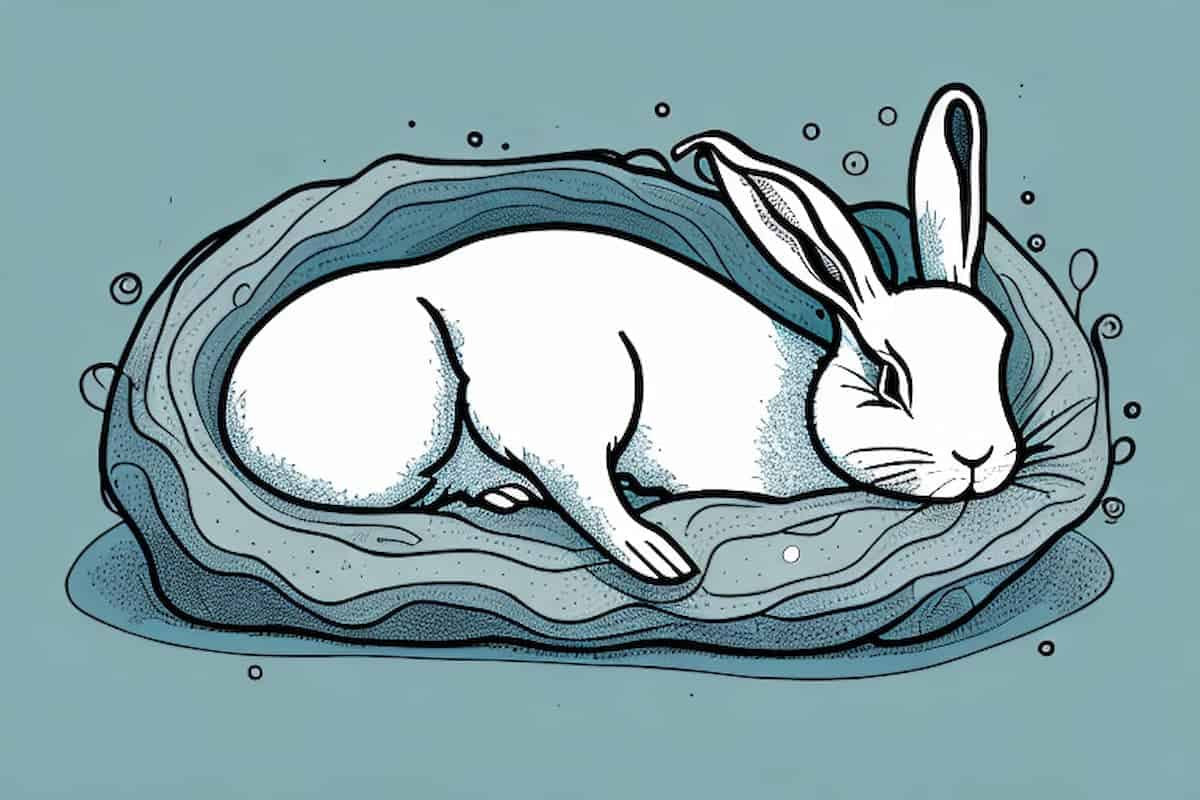You may occasionally see wild rabbits foraging during the day, but where do rabbits sleep at night?
Some species of rabbits sleep underground in tunnel systems that they dig out. The underground burrows are called warrens and often include several entrances and room for a couple of dozen rabbits.
While many wild rabbits sleep in burrows, they also need to occasionally seek shelter in other spots. Here is a closer look at where rabbits sleep in the wild.
Most Rabbits Sleep Underground or Under Cover
29 species of rabbits exist around the world, including 17 species of cottontails in North and South America. Depending on the species, you may find rabbits sleeping in one of the following spots:
- Inside an underground burrow
- In a nest under the cover of grass or vegetation
- Under a pile of yard debris
- Underneath a man-made structure, such as a shed or porch
Rabbits have a lot of different predators to worry about, requiring them to find a safe place to sleep. However, most rabbits stay within an area of several acres and may return to the same resting spot each night.
Young rabbits may travel up to 2.5 miles in search of a new habitat. After finding a suitable spot, the young rabbit may not travel far in search of a place to sleep. For example, the typical cottontail travels up to 200 yards foraging for food during the day before returning to their nesting area for sleep.
Wild European Rabbits Sleep in Warrens
The European rabbit (Oryctolagus cuniculus) is found remaining wild throughout Europe and Australia. This species of rabbit sleeps in warrens, which is what most people picture when they imagine bunnies sleeping.
A warren is an underground tunnel system. Most warrens include a series of tunnels connecting multiple rooms. The sleeping areas are often at the back of the warren, far from the entrance. The areas used for sleeping are typically lined with rabbit fur, grass, moss, and other soft debris. The underground burrows also include several entrances. If a predator reaches one of the entrances, the rabbits can quickly escape out another hole.
Burrows are typically built on slopes, banks, and other elevated terrains. Building a burrow in an elevated area improves drainage, decreasing the risk of the burrow flooding during a storm.
Pygmy Rabbits and Volcano Rabbits Dig Burrows
The pygmy rabbits and the volcano rabbits are the only wild rabbits in North America that burrow. The pygmy rabbit is only found in parts of the northwestern US. Another small species called the volcano rabbit resides in Mexico.
Pygmy rabbits create burrows under sagebrush. Sagebrush is the name for several species of shrubs found in the western half of the US. The sagebrush provides the perfect cover for the small rabbits while they sleep, as pygmy rabbits are prey for a variety of larger animals, including owls, crows, foxes, badgers, and coyotes.
The sagebrush provides cover for safe sleeping and a source of food. About 50% of the rabbit’s diet comes from the sagebrush during the summer.
Pygmy rabbits use their small feet to dig out tunnels in the loose soil under the shrubs. If the pygmy rabbits abandon a burrow, other species may use the tunnels as a place to sleep. Chipmunks, badgers, and ground squirrels may sleep in a former pygmy rabbit burrow.
Volcano rabbits live in mountainous areas of Mexico and build their burrows near mounds of tall grass or vegetation. The burrows are typically only up to 15 inches deep but may extend up to 15 feet in length.
Volcano rabbits also occasionally sleep in thick patches of grass, which is also where they tend to give birth to their litters. The newborn volcano rabbits may sleep in the thick grass until they are old enough to walk around on their own.
Rabbits May Sleep Under Yard Debris or Man-Made Structures
Wild rabbits may not always find an ideal spot for a burrow or a nest in urban areas, forcing them to find other places to sleep. It is common for rabbits in cities and suburbs to sleep under yard debris and man-made structures.
Homeowners often throw twigs, branches, and other tree trimmings into piles, which can provide the perfect shelter for rabbits. Rabbits may also try to escape the winter weather by burrowing under a garage, shed, or porch with loose soil around the foundation.
Cottontails and Jackrabbits Sleep in Nests
Wild rabbits in the United States and Canada sleep in nests instead of warrens. Most of the wild rabbit population in North America is comprised of cottontails and jackrabbits.
Cottontails and jackrabbits do not burrow. A jackrabbit is considered a “hare”, which is a separate species from the rabbits. The Eastern cottontail is the most common species of rabbit in the United States. It sleeps in nests instead of warrens.
The nests are typically shallow and built from a combination of grass and rabbit fur. The rabbit first scratches out a depression in the grass and lines it with grass. Rabbits also tend to pull loose fur from their chests. After giving birth, a mother cottontail rabbit may cover the top of the nest with twigs to protect the litter as they sleep.
Rabbits often build their nests in grassy areas near trees or bushes. However, they also occasionally build nests out in the open. Most nests resemble a pile of messy grass, allowing it to blend in with the surrounding vegetation.
Swamp Rabbits Sleep in Thickets of Grass or Fallen Trees
Swamp rabbits are a species of rabbit found around the Gulf Coast and the south-central region of the US. Instead of burrows or nests, swamp rabbits typically sleep in thickets of grass or fallen trees in swampy areas.
Swamp rabbits often create depressions in the ground using their feet. The surrounding grass or trees provide a hiding spot as they sleep.
Conclusion
Wild European rabbits mostly sleep in warrens, which typically include a series of tunnels and several entrances. Up to 20 rabbits may sleep together in a warren.
Pygmy rabbits and volcano rabbits also dig burrows. However, most of the rabbits in the United States are cottontails, which do not burrow. Cottontails typically sleep in nests that they build from grass and fur.





